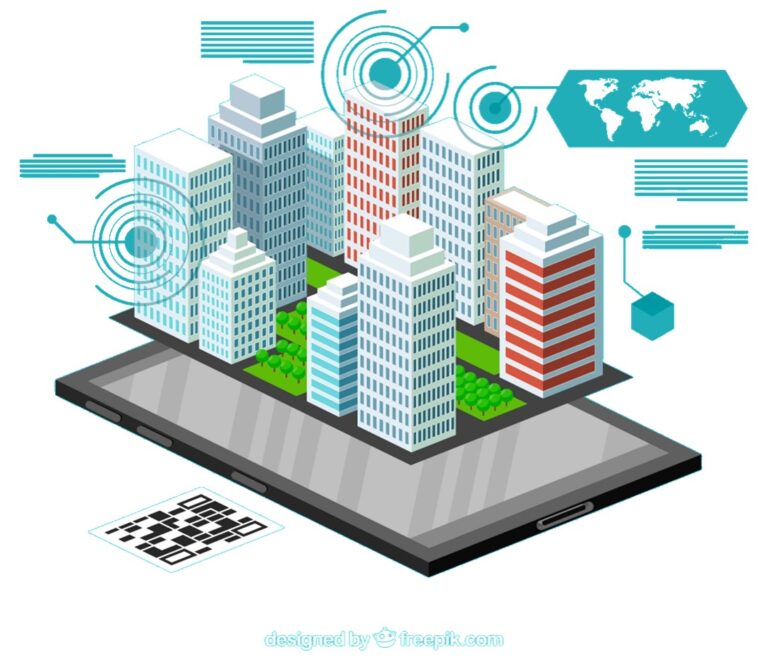Photovoltaic self-consumption has experienced remarkable growth in France over the past two years, particularly in the tertiary buildings sector. This dynamic is explained by a combination of environmental, regulatory and economic factors.
Why favor self-consumption?
An imperative for decarbonization of tertiary buildings
France has committed to an ambitious decarbonization strategy, in line with the recommendations of the Intergovernmental Panel on Climate Change (IPCC). Tertiary buildings, which include office, retail, educational and administrative buildings, are at the heart of this strategy. These buildings represent a significant part of greenhouse gas (GHG) emissions in France.
The National Low Carbon Strategy (SNBC), launched by the State in 2015, imposes clear objectives for reducing GHG emissions by 2050. It plans for the building sector (residential and tertiary combined) to reduce by 95% GHG emissions over this horizon.
To achieve this, it is essential to reduce the consumption of fossil energy and encourage the use of renewable energies. Particularly for heating buildings by replacing oil or gas boilers with heat pumps.
Photovoltaic self-consumption, by making it possible to produce and consume carbon-free electricity on site, thus becomes a relevant response to this decarbonization imperative. This approach not only limits CO2 emissions but also contributes to France's energy sovereignty.
A strengthening regulatory context
The French regulatory framework has been considerably strengthened in recent years to encourage the energy transition in the tertiary sector. Several laws and decrees aim to accelerate the integration of renewable energies and the improvement of the energy efficiency of buildings.
- The Tertiary Decree : resulting from the Elan law of 2018, requires tertiary buildings of more than 1,000 m² to reduce their energy consumption by 40% by 2030, by 50% by 2040, and by 60% by 2050, compared to a reference year. The installation of photovoltaic panels for self-consumption is fully in line with this logic, reducing dependence on conventional energy and contributing to the achievement of these objectives. The consumption of renewable energy buildings (solar, geothermal for example) can thus be deducted from the total consumption, after having been sub-counted.
- The BACS Decree (Building Automation & Control Systems) completes this dynamic by requiring tertiary buildings to be equipped with automation and control systems by January 1, 2025. These systems make it possible to optimize energy management and promote integration of renewable energies, thus making photovoltaic self-consumption even more relevant.
- The APER (Acceleration for Renewable Energies) law , adopted in 2023, aims to facilitate and accelerate the deployment of renewable energies in France. This law simplifies administrative procedures for the installation of photovoltaic panels, particularly on tertiary buildings, which contributes to the acceleration of self-consumption. It therefore makes the installation of solar panels on the roof compulsory by 2028 for tertiary buildings of more than 500m². But also the installation of photovoltaic shades for car parks of more than 1500m² by 2026/2028.
An economical solution to rising electricity prices
Since 2022, the electricity market in France has been marked by a significant increase in prices, partly due to the global energy crisis. This situation has prompted many players in the tertiary sector to look for alternatives to reduce their energy bills. Photovoltaic self-consumption then emerges as a viable economic solution.
Producing your own electricity allows you to partially avoid market price fluctuations. In addition, the upcoming reform of ARENH (Regulated Access to Historical Nuclear Electricity) could lead to a reduction in electricity quotas at regulated prices for companies, thus increasing their exposure to market prices. Self-consumption therefore becomes a strategy for securing long-term energy costs.
A growing phenomenon
Renewable energies (wind and solar) are booming at the European level in general, as in France.
The share of electricity produced by wind and solar power in the European Union reached 30% for the first time, during the first half of 2024, according to figures from the British study center Ember*. A figure up 13% compared to the first half of 2023, exceeding the production of electricity from fossil fuels, estimated at 27%.
A similar trend in France, according to the latest assessment of the electricity system published in July by RTE : in the first half of 2024, solar production reached 11.4 TWh, equaling fossil thermal production for the first time.
Collective self-consumption
Today, in France, collective self-consumption is constantly growing:
• 6 operations recorded in 2018
• 428 active projects in May 2024
• 625 still under study
As a result, 4,776 consumers** are involved in a collective operation, for a total production power of 33,619 kilovolt-amperes (kVA). Mainly local authorities, who wanted to add value to their roofs in a context of high volatility in energy prices. But also more and more social landlords, businesses and even economic activity zones.
Individual self-consumption
On an individual scale too, the solar boom is confirmed: in the second quarter of 2024, individual self-consumption crossed the threshold of 500,000 installations (556,039 exactly), i.e. growth of 71% in one year, according to the figures published by the distribution network manager Enedis.
Self-consumption and electrical flexibility
In a context of decarbonization of buildings, but also of transport (the largest GHG emitting sector in France with 34% of emissions last year), the electrification of our uses is a crucial issue.
Our national energy mix tomorrow will be more electric and less carbon-intensive. Consume better, but also consume less in the spirit of the Tertiary Decree.
And tertiary buildings have a key role to play in helping to make electricity demand on the network more flexible.
GTB to manage production and self-consumption
The installation of building automation and control systems GTB (Technical Building Management) aims to improve the energy performance of tertiary buildings with:
• The integration of devices allowing automatic regulation of heating, ventilation, air conditioning (HVAC), and lighting.
• The implementation of management systems to monitor energy consumption in real time, which facilitates the identification of areas for energy savings.
The objective is to enable more efficient energy management, by aligning the use of equipment as closely as possible with the building's solar production phases. And thus by reducing waste and unnecessary consumption, which is essential to respect the trajectories for reducing greenhouse gas emissions set by law.

Storage by electric vehicles
Aligning photovoltaic production and consumption of the electricity produced as closely as possible is particularly relevant to the subject of mobility. For example, by recharging electric vehicles when the solar power plant produces the most. If the vehicle is not used afterwards, it can even be used to store electricity thanks to its battery. Electricity which can then be reinjected into the network later, at a time when the solar power plant will not produce enough to cover consumption at a given time. This concept, often called Vehicle-to-Grid (V2G), transforms electric vehicles (EVs) into active elements of the electricity grid, offering multiple benefits.
Beyond tertiary buildings, this issue of flexibility of the electricity network also concerns residential individuals. The Energy Regulatory Commission has launched a consultation to revise the regulated electricity sale prices***. Objective: review the off-peak/peak hour pricing system which currently encourages people to shift their electricity consumption at night. Instead, to encourage consumers to adapt their uses to times when solar production is high.
The addition of charging stations will logically increase the demand for electricity. It is crucial for building managers to anticipate this increase in consumption, by adjusting the electrical capacity of their building, or even by planning load optimization systems. These systems, often called "smart charging", make it possible to regulate peaks in consumption, distributing energy more efficiently and avoiding network overloads.
In conclusion, the development of photovoltaic self-consumption in tertiary buildings in France meets a triple imperative: ecological, regulatory and economic. Faced with the challenges of decarbonization, an increasingly restrictive legislative framework and the volatility of energy prices, self-consumption appears to be a sustainable and strategic solution for the tertiary sector.
* https://www.actu-environnement.com/dit-jour/1497.html#ntrack=cXVvdGlkaWVubmV8MzU4Ng%3D%3D[NjU1Mjcx
** Source Enogrid Environment News
